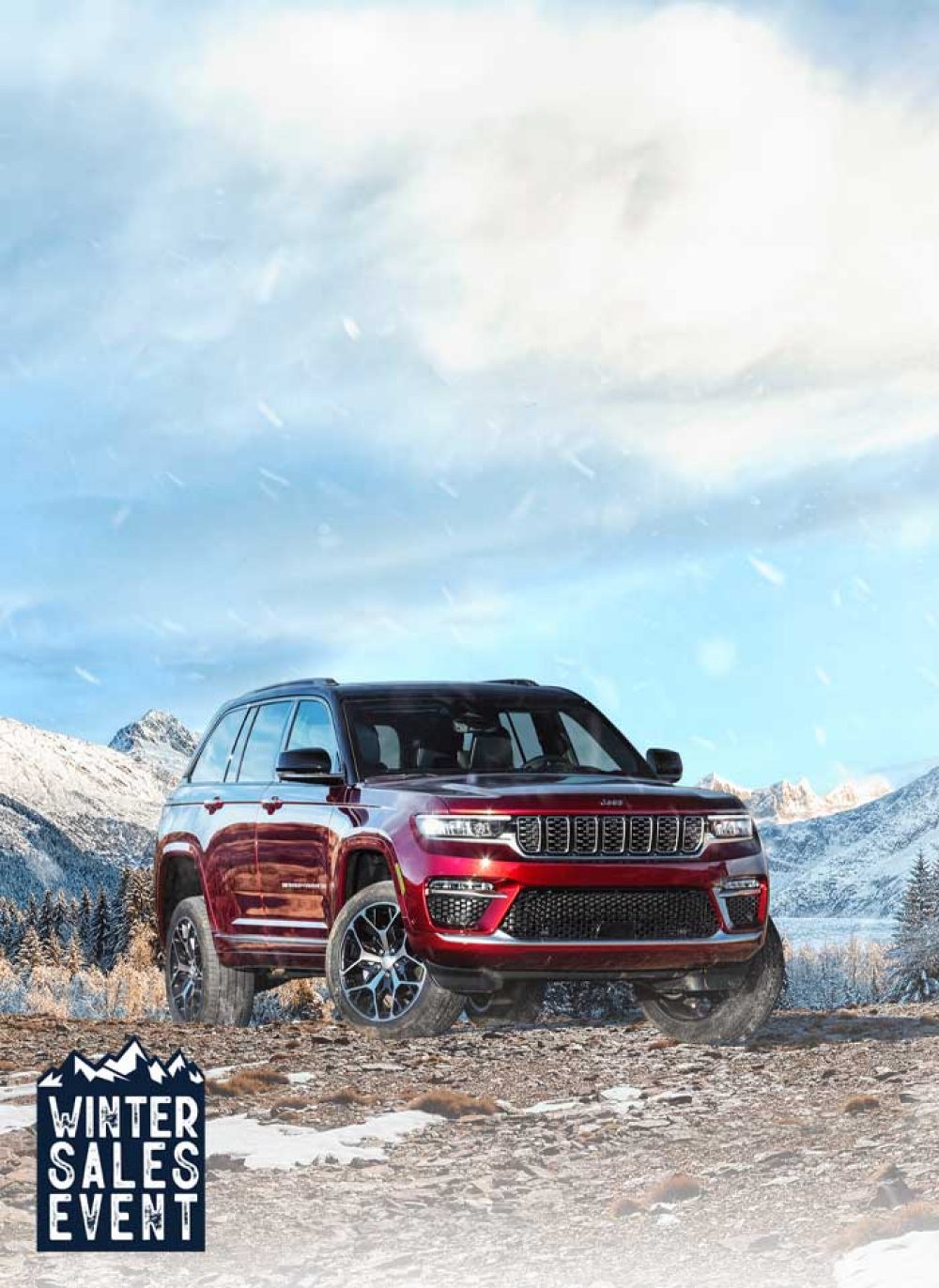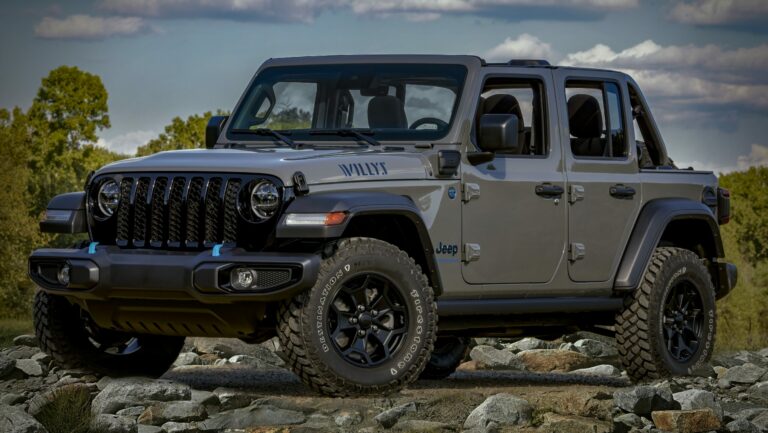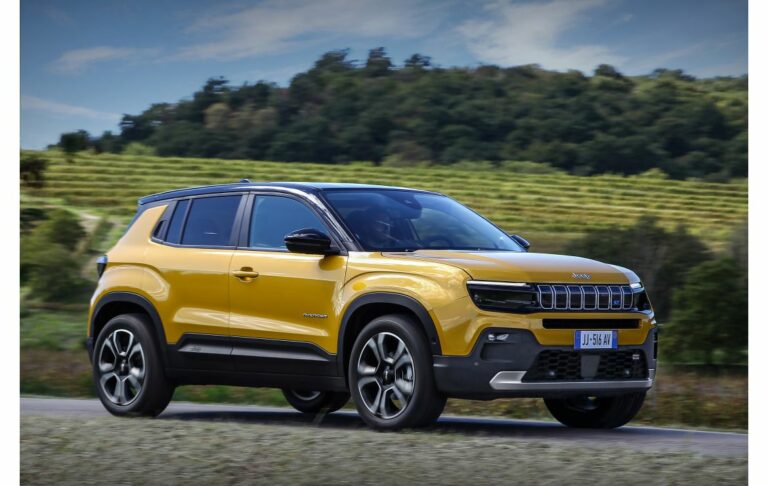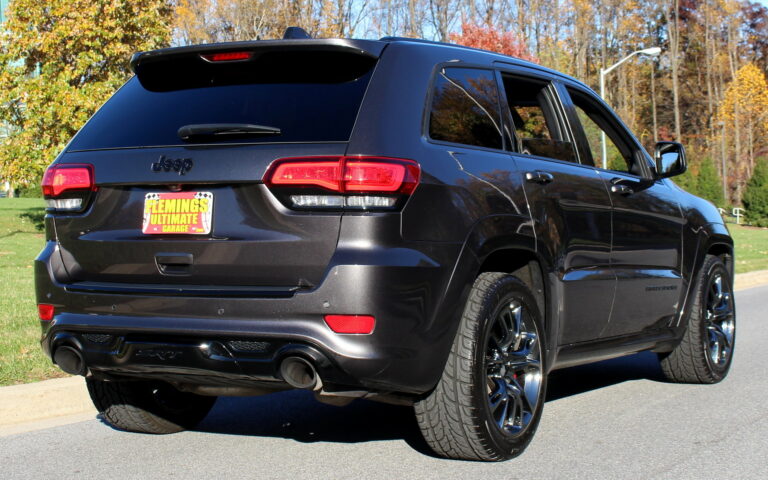Jeep Wrangler TJ Frame For Sale: Your Ultimate Guide to Restoring or Building Your Icon
Jeep Wrangler TJ Frame For Sale: Your Ultimate Guide to Restoring or Building Your Icon jeeps.truckstrend.com
The Jeep Wrangler TJ, produced from 1997 to 2006, holds a special place in the hearts of off-road enthusiasts and daily drivers alike. Known for its rugged reliability, classic round headlights, and coil spring suspension, the TJ offers a unique blend of vintage charm and modern capability. However, like any vehicle of its age, the TJ is not immune to the relentless march of time, and one of its most vulnerable components is its frame. Rust, accidents, and extreme off-road use can compromise the structural integrity of the frame, leading many owners to search for a "Jeep Wrangler TJ Frame For Sale."
Finding a replacement TJ frame isn’t just about repairing a damaged vehicle; it’s about preserving a legacy, ensuring safety, and often, enabling ambitious restoration or custom build projects. A solid, uncompromised frame is the very foundation of your Jeep, dictating its handling, safety, and longevity. This comprehensive guide will delve into everything you need to know about purchasing a TJ frame, from understanding its importance to navigating the market, inspecting potential buys, and even a brief overview of the frame swap process.
Jeep Wrangler TJ Frame For Sale: Your Ultimate Guide to Restoring or Building Your Icon
Why Consider a Replacement TJ Frame? The Unseen Foundation
The frame is the backbone of your Jeep Wrangler TJ, supporting the body, engine, drivetrain, suspension, and steering components. It’s what gives the vehicle its strength and defines its fundamental structure. When this critical component is compromised, it affects everything from ride quality and alignment to, most importantly, safety.
Common TJ Frame Issues: The Enemy Within
The primary antagonist for TJ frames, especially in regions with harsh winters and road salt, is rust. Unlike superficial body rust, frame rust can be insidious, creeping from the inside out and often going unnoticed until it’s severe.
- Rust Perforation: Common areas include:
- Skid Plate and Control Arm Mounts: These areas collect dirt and moisture, leading to severe rust, often compromising critical suspension attachment points.
- Body Mounts: Rust here can cause the body to sag or even detach from the frame, leading to uneven panel gaps and unsafe driving conditions.
- Rear Crossmember: The section above the gas tank is a notorious rust trap, often weakening the rear structure.
- Trailing Arm Mounts: Rust on these mounts can lead to dangerous handling characteristics.

- Accident Damage: Collisions can bend, twist, or crack the frame, compromising its straightness and ability to protect occupants. Even seemingly minor impacts can cause unseen structural damage.
- Off-Road Stress: While TJs are built for abuse, repeated hard impacts, rock crawling, or improper recovery techniques can lead to frame bending, particularly around the mid-section or suspension mounts.

Benefits of a Frame Swap: A New Lease on Life
Investing in a replacement frame offers significant advantages:
- Enhanced Safety: A structurally sound frame ensures optimal crash protection and predictable handling.
- Restored Structural Integrity: Eliminates the hidden dangers of compromised metal, allowing all components to function as designed.
- Improved Ride and Handling: A straight frame is crucial for proper suspension alignment, leading to better ride quality, tire wear, and steering response.
- Foundation for Restoration: For enthusiasts undertaking a full restoration, a new or rust-free frame provides the perfect starting point for a truly revitalized Jeep.
- Custom Builds: For those dreaming of a unique build, a bare frame offers a clean slate for custom suspension, drivetrain, or body modifications.
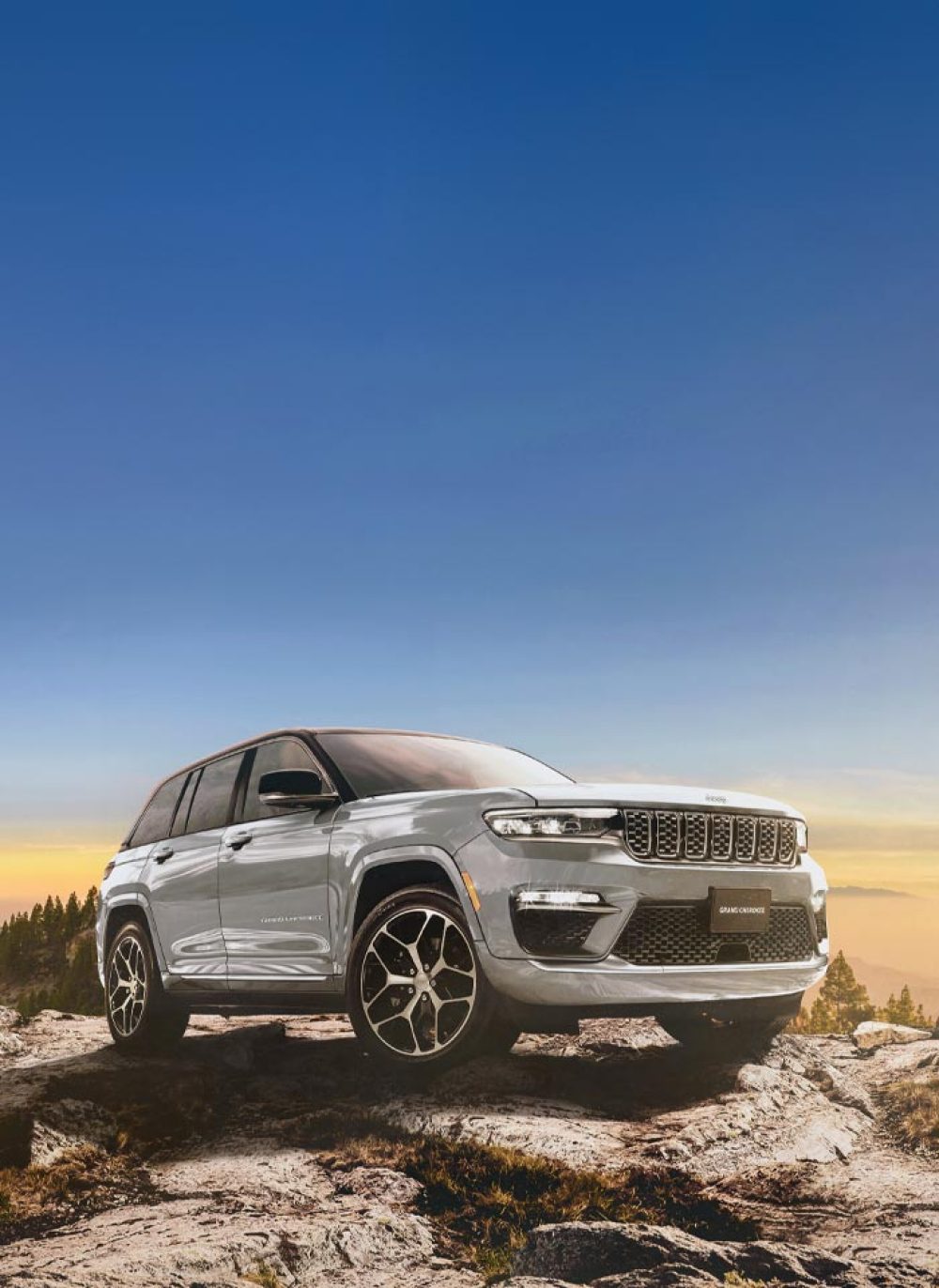
Types of TJ Frames Available for Sale: Navigating Your Options
When searching for a "Jeep Wrangler TJ Frame For Sale," you’ll encounter a few distinct categories, each with its own pros and cons:
- Used/Salvaged Frames:
- Description: Frames pulled from donor vehicles, often salvaged due to body damage, engine failure, or other non-frame-related issues.
- Pros: Most affordable option; readily available from junkyards, online marketplaces, or specialty salvage yards.
- Cons: Condition can vary wildly; high risk of hidden rust, previous accident damage, or poorly executed repairs. Requires thorough inspection.
- Refurbished/Repaired Frames:
- Description: Used frames that have been professionally cleaned (e.g., sandblasted), inspected, repaired (rust sections cut out and new metal welded in), and often painted or coated.
- Pros: Generally in much better condition than raw used frames; repairs are often visible and documented; can save significant prep work.
- Cons: Higher cost than raw used frames; quality of repairs can vary – look for reputable sellers.
- New/Aftermarket Replacement Frames:
- Description: Brand new frames manufactured by aftermarket companies. These are typically exact replicas of the original or sometimes feature minor improvements (e.g., thicker steel in common rust areas).
- Pros: Pristine condition, no rust, no hidden damage; perfect for show-quality restorations or those who want the absolute best.
- Cons: Highest cost by a significant margin; limited manufacturers, potentially long lead times.
Key Considerations When Buying a TJ Frame: An Inspector’s Checklist
Purchasing a frame is a significant investment of time and money. Diligent research and inspection are paramount.
- Rust Inspection: Your Number One Priority:
- Critical Areas: Pay special attention to the front and rear control arm mounts, body mounts (especially those under the doors and rear), the rear crossmember, and the skid plate mounts.
- Tools: Bring a small hammer or a pointy tool to tap on suspected areas. A solid "clink" is good; a dull "thud" or a crunching sound indicates rust. Look for flaking, bubbling paint, or visible holes. Use a flashlight to inspect inside the frame rails where possible.
- Surface vs. Structural: Don’t be deterred by minor surface rust that can be wire-brushed away and coated. Be extremely wary of scaling rust, perforations, or significant section loss.
- Accident Damage and Straightness:
- Visual Inspection: Look for kinks, bends, ripples in the metal, or areas that look like they’ve been heated or poorly welded.
- Measurements: If possible, compare key measurements (e.g., diagonal measurements from corner to corner) to factory specifications or a known straight frame.
- Previous Repairs: Be suspicious of excessive undercoating or paint in localized areas, which might hide repairs. Ask the seller about any known history.
- Documentation and VIN:
- VIN Tag: The frame has its own VIN (Vehicle Identification Number) stamped on it, typically near the passenger side front wheel well. Verify this matches any documentation provided.
- Legalities: In some states, a frame swap might require special inspection or re-titling if the frame’s VIN becomes the new primary identifier. Understand your local DMV regulations. For most, if you’re keeping your original body/VIN, the frame is just a replacement part.
- Compatibility:
- Year Differences: While most TJ frames (1997-2006) are largely interchangeable, there can be minor differences in certain brackets or mounting points, especially between early (97-02) and late (03-06) models. Double-check if the frame year matches your Jeep or if you’re prepared for minor modifications.
- Rubicon vs. Non-Rubicon: Rubicon frames are essentially the same, but may have slightly different factory skid plate mounting or transmission crossmember configurations depending on the transfer case.
- Shipping and Logistics:
- Size and Weight: Frames are large and heavy. Freight shipping can be expensive.
- Local Pickup: If possible, picking up locally can save a significant amount of money and allow for in-person inspection.
- Preparation: Ensure the frame is properly secured for transport to prevent further damage.
- Seller Reputation:
- Pictures: Demand clear, high-resolution pictures of all angles, especially problem areas. Ask for specific close-ups.
- Communication: A responsive and transparent seller is a good sign. Be wary of sellers who are evasive or unwilling to provide detailed information.
- Reviews: If buying from a business, check their online reviews.
The Frame Swap Process: A Brief Overview
A frame swap is not a weekend project for the faint of heart. It’s a complex, labor-intensive undertaking that requires mechanical aptitude, specialized tools, and a safe workspace.
- Preparation: Gather all necessary tools (engine hoist, body lift, jack stands, wrenches, impact guns), organize your workspace, and label everything as you disassemble.
- Disassembly: This involves removing the body (often requiring a hoist or several strong friends), engine, transmission, transfer case, axles, suspension components, steering, fuel tank, and all wiring and brake lines from the old frame.
- Frame Inspection & Prep: Thoroughly clean, inspect, and if necessary, paint or rust-proof your new frame before mounting components. Address any minor surface rust or blemishes.
- Reassembly: Carefully transfer all components from the old frame to the new one. This is where meticulous labeling pays off. Ensure all bolts are torqued to spec.
- Body Mounting: Carefully lower the body onto the new frame, aligning body mounts and ensuring no wires or lines are pinched.
- Post-Swap Checks: Double-check all connections, fluid levels, brake lines, and wiring. Perform a thorough alignment. Test drive cautiously.
Challenges: Time commitment (hundreds of hours), unexpected broken bolts, rusted components, specialized tools (e.g., spring compressors, alignment tools), and the sheer physical effort involved. Many choose to outsource this job to a professional shop if their skills or resources are limited.
Tips for a Successful TJ Frame Purchase & Swap
- Patience is a Virtue: Don’t rush into a purchase. The right frame might take time to find.
- Inspect, Inspect, Inspect: If at all possible, inspect the frame in person. If not, rely heavily on detailed photos, video calls, and a trusted third party.
- Budget for More: The frame itself is just one cost. Factor in shipping, new body mounts, hardware, paint/coating, and potential unexpected parts or labor.
- Consider a Professional: If you’re not confident in your mechanical skills, budget for professional assistance, at least for the heavy lifting or final checks.
- Document Everything: Take photos of the old frame before disassembly, label wires and hoses, and keep track of all hardware. This will be invaluable during reassembly.
Pricing Guide: What to Expect for a Jeep Wrangler TJ Frame
The cost of a TJ frame can vary significantly based on its condition, type (used, refurbished, new), and the seller’s location. The table below provides a general range, but always expect variations.
| Frame Type | Condition | Estimated Price Range (USD) | Key Influencing Factors |
|---|---|---|---|
| Used/Salvaged Frame | Minor surface rust, no major structural damage | $500 – $1,500 | Severity of rust, presence of accident damage, completeness (e.g., with control arms), seller’s location, market demand. |
| Significant surface rust, minor repairs needed | $300 – $800 | Requires more work, higher risk of hidden issues. | |
| Refurbished/Repaired Frame | Sandblasted, painted, professionally repaired | $1,500 – $3,500 | Quality of repair work, extent of original damage, type of coating (e.g., powder coat), reputation of refurbisher. |
| New/Aftermarket Frame | Brand new, ready for build | $3,500 – $6,000+ | Manufacturer (e.g., Quadratec, Throttle Down Kustoms), availability, material thickness, shipping costs. |
Note: These prices do not include shipping, which can add several hundred to over a thousand dollars depending on distance and carrier.
Frequently Asked Questions (FAQ)
Q1: Do I need a title for a replacement frame?
A1: Generally, if you are simply replacing a damaged frame on your existing titled Jeep and retaining your original body with its VIN, the frame is considered a replacement part. You typically do not need a separate title for the frame itself. However, it’s crucial to check your local Department of Motor Vehicles (DMV) regulations, as rules vary by state, especially if the frame has a different VIN or if you’re building a vehicle from scratch.
Q2: Are all TJ frames exactly the same?
A2: While most TJ frames (1997-2006) are largely interchangeable, there can be minor differences. Early models (1997-2002) and later models (2003-2006) might have slight variations in mounting brackets for certain components (e.g., skid plates, fuel lines, or exhaust hangers). Rubicon models also have specific transfer case skid plate mounts. Always verify the year of the donor frame and be prepared for minor modifications if it doesn’t perfectly match your Jeep’s year.
Q3: How much does a professional frame swap cost in labor?
A3: A professional frame swap is a very labor-intensive job. Labor costs can range from $2,000 to $5,000+, depending on the shop’s hourly rate, the complexity of your specific Jeep (e.g., extent of rust on components, custom modifications), and any unexpected issues encountered. This figure typically does not include the cost of the frame or any new parts required.
Q4: Can I repair my rusty frame instead of replacing it?
A4: For minor, localized rust that has not compromised the frame’s structural integrity, professional repair (cutting out rusted sections and welding in new steel) is possible. However, if the rust is widespread, severe, or affects critical mounting points, replacement is often the safer, more durable, and ultimately more cost-effective long-term solution. Poorly executed repairs can be dangerous.
Q5: What are the essential tools needed for a frame swap?
A5: Key tools include a sturdy engine hoist or vehicle lift (for body removal), heavy-duty jack stands, a comprehensive set of sockets and wrenches, an impact gun, a torque wrench, cutting tools (grinder, reciprocating saw), welding equipment (if minor repairs are needed), and plenty of penetrating oil. Organization tools like labels and plastic bags are also invaluable.
Q6: How long does a frame swap typically take?
A6: For an experienced mechanic with a well-equipped shop, a frame swap might take 40-80 hours of labor. For a DIY enthusiast working in their garage, it can easily stretch into several weeks or even months, especially if unexpected issues arise or you’re working part-time. Patience and planning are crucial.
Conclusion: Building on a Solid Foundation
The search for a "Jeep Wrangler TJ Frame For Sale" is often born out of necessity, but it can also be an exciting step towards giving a beloved vehicle a new lease on life. Whether you’re battling the scourge of rust, recovering from an accident, or embarking on an ambitious custom build, a solid frame is the cornerstone of a safe, reliable, and enjoyable Jeep. By understanding the types of frames available, conducting thorough inspections, and preparing for the complexities of a swap, you can ensure your TJ continues to conquer trails and turn heads for many years to come, built on a foundation as strong as its legacy.
